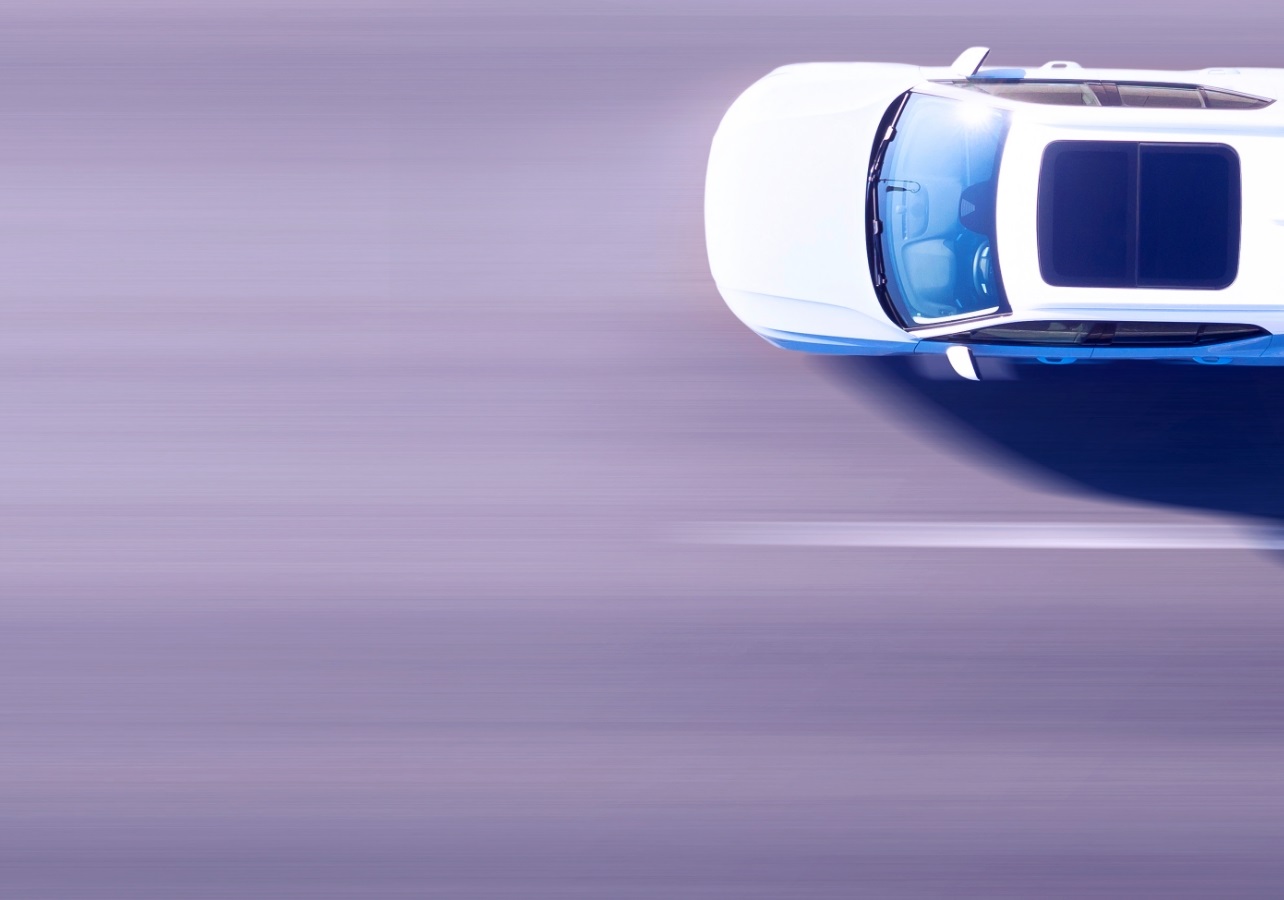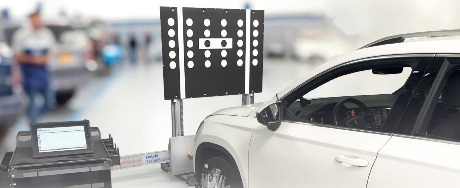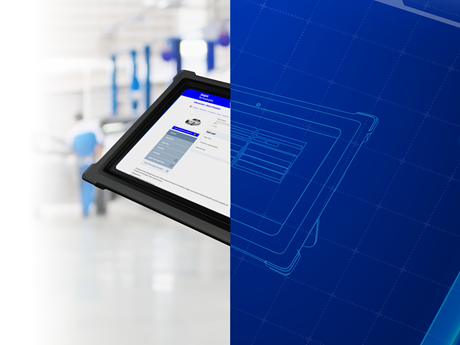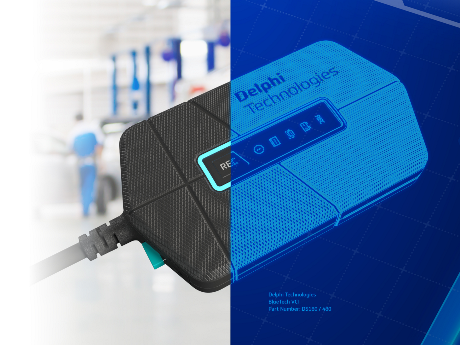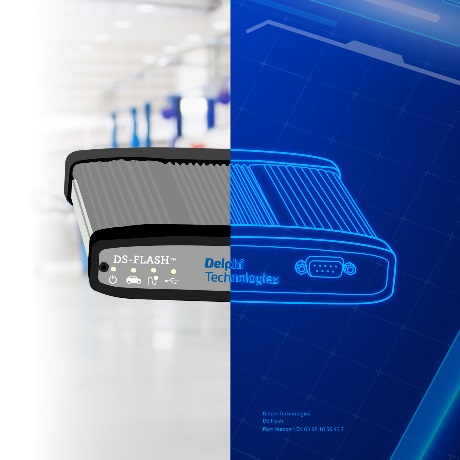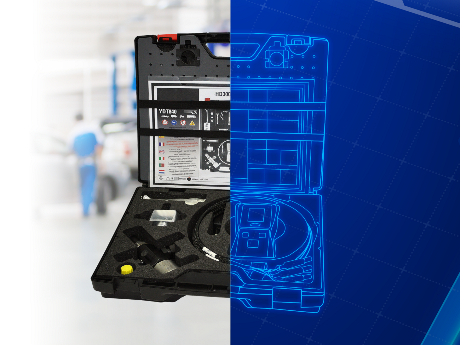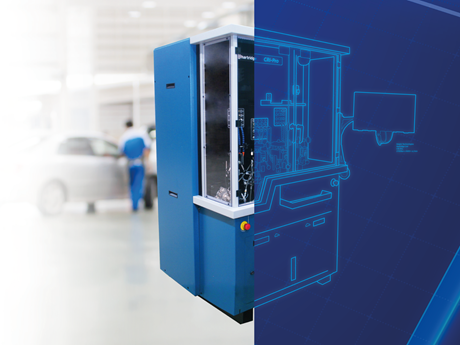ADAS Calibration
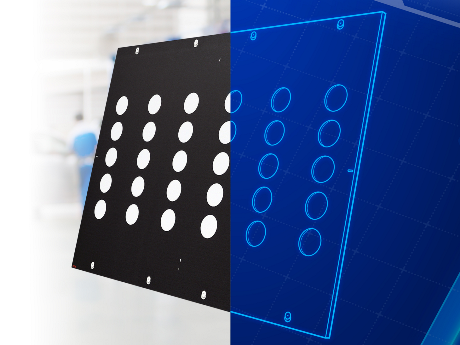
- Product Information
- Product Resources
- Enquire
- Related Products
Designed to provide safety and comfort while driving, Advanced Driver Assistance Systems (ADAS) are becoming increasingly common in latest generation vehicles. Visit our quick guide to learn more about the main systems available on the market today.
These vehicles can be equipped with over 10 different types of environment monitoring functions, utilizing different detection methods & sensors. These essential functions for both safety & comfort can need calibrating as a result of diagnostics, service, replacements, and repairs.
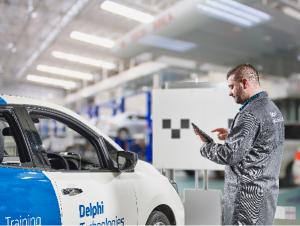
Empower safety with Delphi’ CRC-150 ADAS equipment
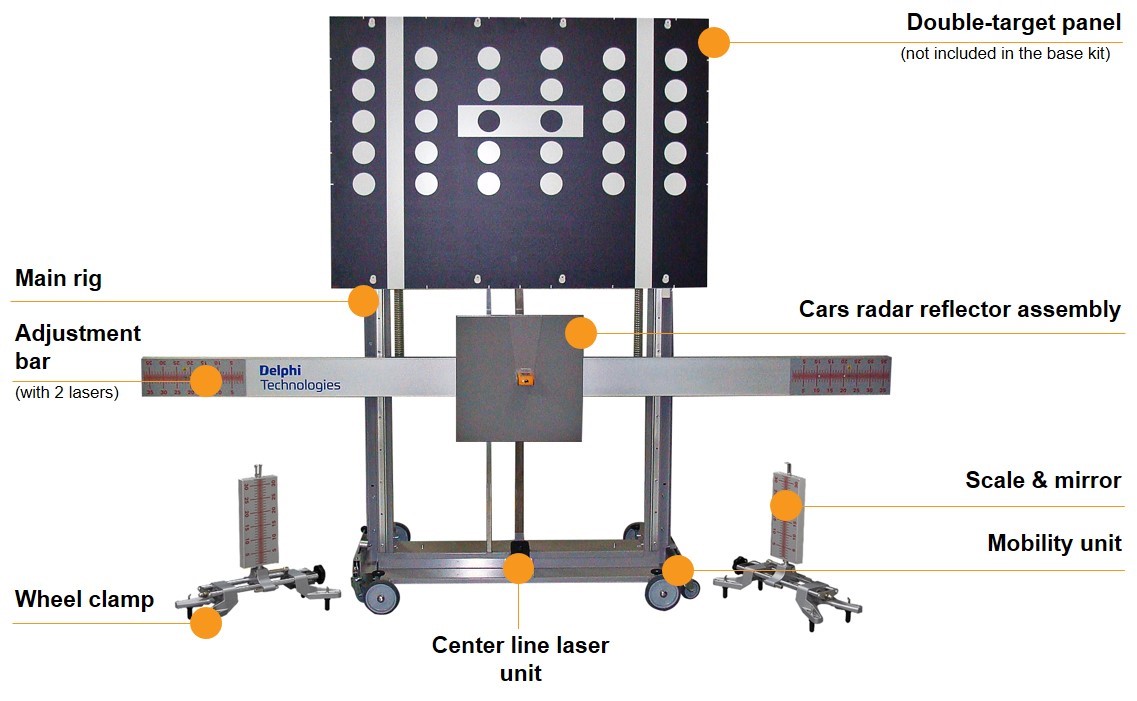
The universal modular equipment developed for the calibration of front sensor Advanced Driver Assistance Systems on multi-brand cars and commercial vehicles, designed to be used with the Delphi DS vehicle diagnostic tool.
Key features of the Delphi ADAS solution
Delphi’ multi-brand, modular ADAS equipment and DS diagnostic software with integrated OEM procedures delivers garages a cost effective, flexible and accurate route into ADAS servicing. Read on to learn more about the key features of the Delphi ADAS calibration equipment (CRC-150).

Coverage for the Delphi ADAS solution
Delphi’ ADAS solution includes dynamic and static variations for front radar and blind spot calibration, as well as camera calibration for front, rear, 360o overview, and night vision camera. Covering 31 vehicle brands, 146+ models with radar, and 284+ models with camera, our continuous improvement program means our coverage will expand with subsequent software developments.
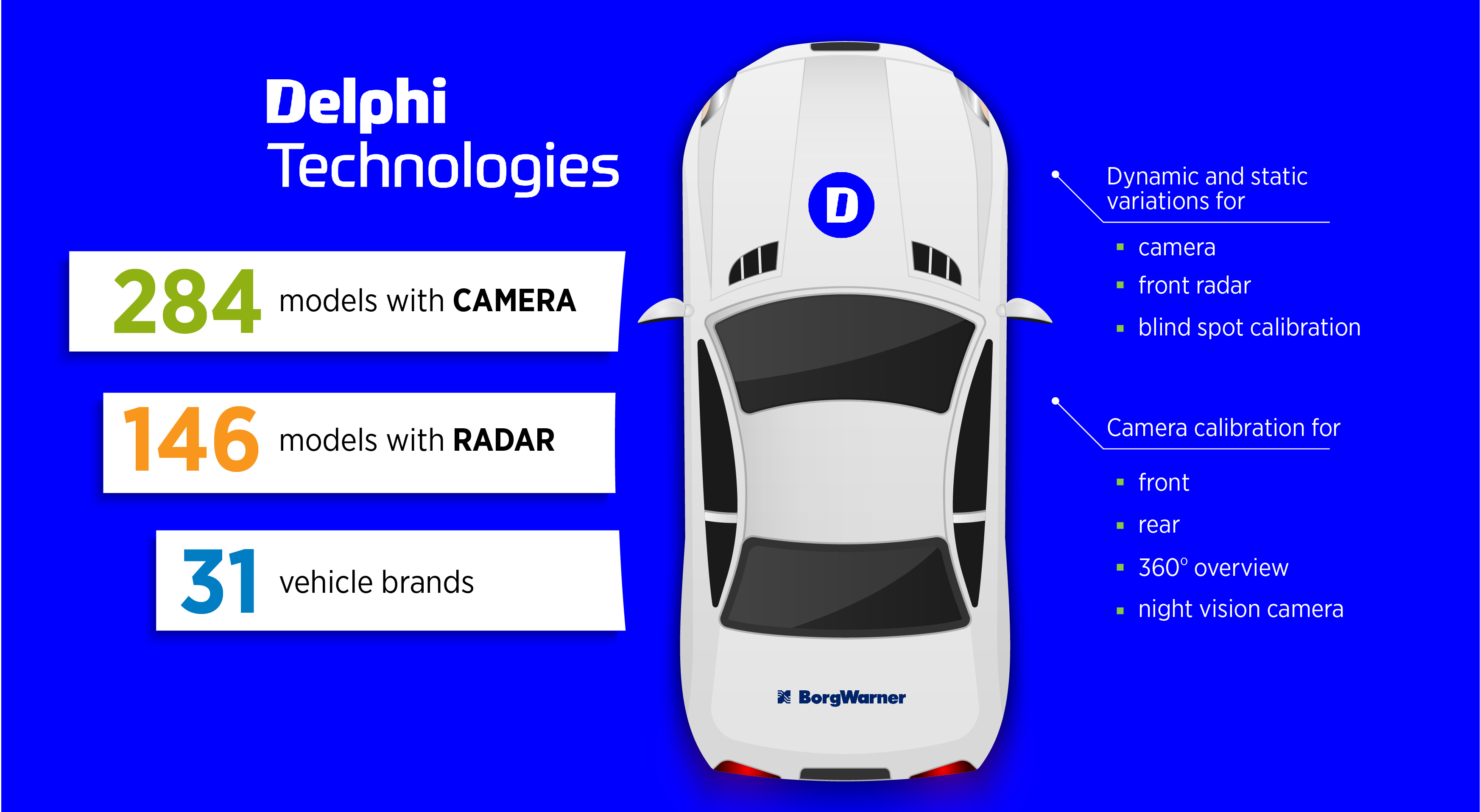
The comprehensive ADAS calibration solution from Delphi
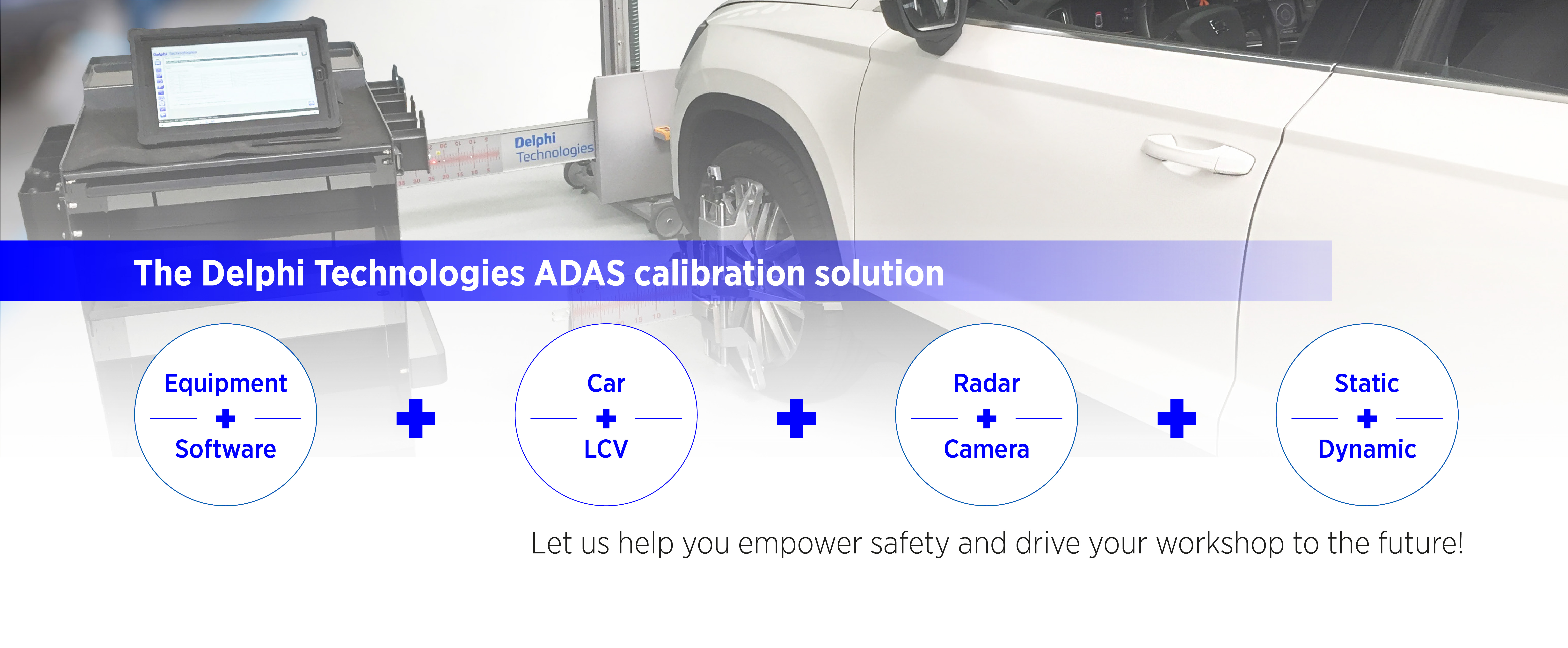
Learn more about ADAS calibration in our brand new how-to video series
ADAS camera calibration
ADAS Type 1
ADAS Type 3
The Delphi Difference
-
100 years of OE experience, supplier to the world’s top automakers
-
OE heritage and knowledge built into every aftermarket part
-
Comprehensive portfolio for a wide range of vehicles and model years
-
Streamlined SKUs for easy inventory management
-
Support through tools, tips and training

Related product resources and downloads

Resource Highlights
In this article, we examine what ADAS is, what it means for vehicle servicing, and why it’s so important for the future of your business.
One of the biggest challenges for the modern garage is to keep up with the times. While it is all important to keep up with the latest technology under the bonnet, there are some exciting developments taking place around the rest of the vehicle body that aren’t to be missed. This takes the form of Advanced Driver Assistance Systems, or ADAS for short, and will become increasingly common place. ADAS technology is one of the fastest growing areas of automotive electronics. It is predicted that in 2020 more than 40% of new vehicles will have at least two types of ADAS fitted as standard. But is your business ready to take advantage of the growing service opportunity that this presents? Here we examine what ADAS is, what it means for vehicle servicing, and why it’s so important for the future of your business.
What is ADAS?
ADAS is a term given to a variety of intelligent systems that enhance vehicle and road safety. Fitted to many modern vehicles, it uses information from multiple sources such as cameras and sensors to detect what is happening around the vehicle. Vehicle-to-vehicle or vehicle-to-networks systems are also used to share data, often in real time, to deliver their benefits.
In some vehicles this information is used simply to assist the driver. Rear view cameras help facilitate parking or adaptive high beams self-level to avoid blinding oncoming traffic. In other instances, it is used to alert the driver to potential dangers such as lane departure warnings (LDW) or collision warnings. It can even take control of the vehicle, offering a level of autonomous driving ahead of the advent of full autonomy. Systems such as Autonomous Emergency Braking (AEB) engage the braking and/or steering without driver input, and Adaptive Cruise Control (ACC) automatically adjusts the vehicle speed to maintain a specific distance from the car in front.
Read our guide to ADAS to learn more about the common ADAS technologies.
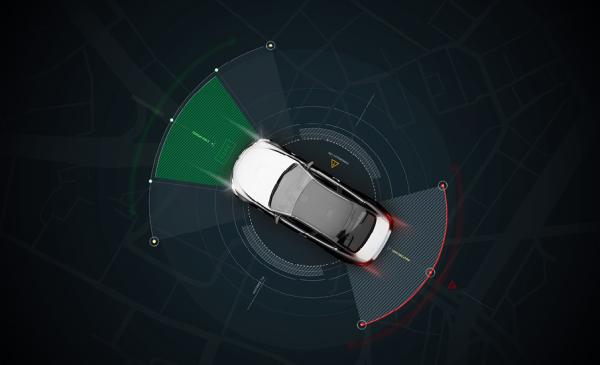
Why does ADAS need calibration?
Since these safety features rely on a combination of cameras and radars, anything which affects their position or field of view, even by a fraction, can be detrimental to the performance of the system. For example, one degree change in the camera position at the windscreen could mean a 1.7 meter deviation 100 meters down the road resulting in the target area being significantly off trajectory. As a result the vehicle could fail to detect and alert the driver to oncoming hazards as inaccurate information and calculations are being sent to the Electronic Control Unit (ECU) causing the ADAS to function incorrectly, or at worst, not at all.
For this reason, it’s important to recalibrate the ADAS components after any sort of accident, bodywork, or service procedure such as windscreen replacement, steering & suspension repairs, and wheel alignment. Any of these can alter an ADAS sensor or camera from its proper position. If left unchecked it can hinder the overall performance of the vehicle and have direct negative consequences for road user safety.
How do you calibrate an ADAS?
Every vehicle manufacturer has their own specific parameters, processes, and hardware requirements. Some sensors can be calibrated in the workshop, others require a test drive, and some need both. It can be somewhat complex and time consuming, however given how essential they are to vehicle safety; it is not an option to just not do it.
Most of today’s radar sensors require static, in-workshop calibration. To perform this the technician must first establish the vehicle’s centre line, otherwise known as its thrust axis, often using vehicle manufacturer specific tools and processes. Special aiming targets are positioned in precise locations relative to the centre line and sensor, and between one and 10 meters away from the vehicle. On some cars it may also be necessary to level the sensor independently too. Finally the calibration must be initiated using an OBD diagnostic tool.
A dynamic calibration is an on-road procedure with a diagnostic scan tool. The vehicle must be driven along straight roads with clear lane markings at specified speeds until the calibration is complete. Certain ADAS calibrate best in minimal traffic, whereas others may require more ‘targets’ in the form of heavier traffic and road signs. Unfortunately poor weather or poor road markings can hinder the calibration.
What does this mean for independent garages?
To take advantage of this, garages will need to make some investments in workshop facilities- a large, level, uniformly lit indoor area- multi-brand diagnostic equipment, hardware and technical training. Whilst this may represent a sizeable investment for most, it is not as prohibitive as you might think, thanks to the rapid return on investment offered from the calibrations, servicing, and repair options now possible with such a set up. With more cars coming through the door fitted with ADAS, now is the right time to make this investment. Without it, workshops could be ruling themselves out of business altogether.
How can an independent garage seize this hot opportunity?
It is clear that ADAS is here to stay, becoming a mainstream feature of vehicles thanks to its direct contribution to safety and vehicle performance. It also means that there is no time like the present to add this service capability to your business. By embracing this technology you can ensure that vehicles leave your workshop continuing to perform to expectations, and above all, keeping the driver safe. Stepping into this new service prospect is easier than you think as Delphi have developed hardware, software and training to support this rapidly growing opportunity. Thanks to its modular set up which allows you to scale up this service over time and it working seamlessly with our current diagnostic system; it has never been easier to add a completely new service to your repertoire with confidence.
Learn about the comprehensive ADAS calibration solution from Delphi.

Visit our Technician Library for access to Documents and Downloads
Get in touch
The full Delphi Diagnostics & Test Equipment product range

Find out where to buy Delphi parts
